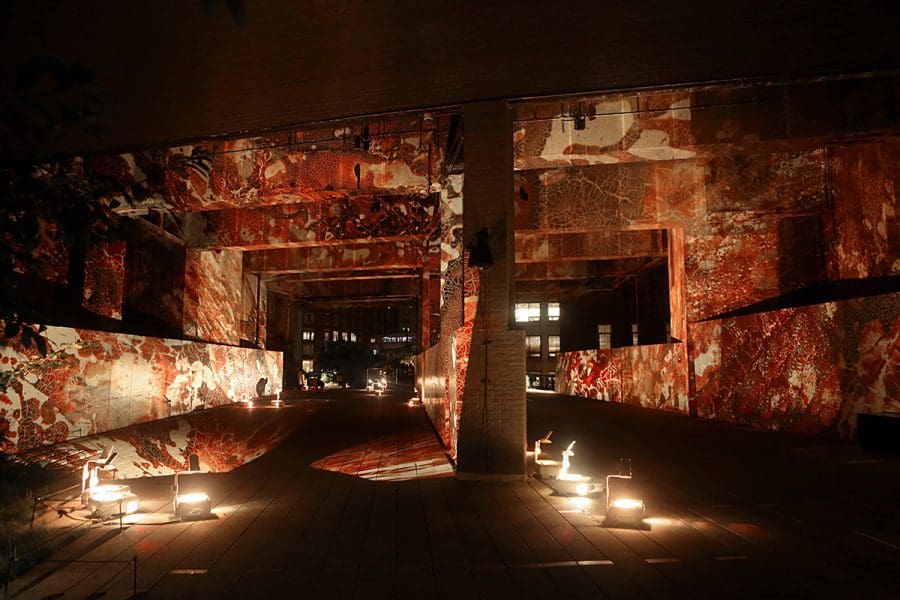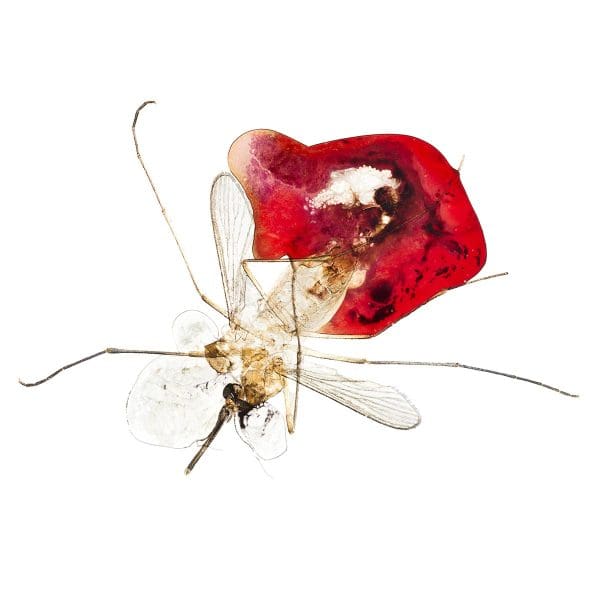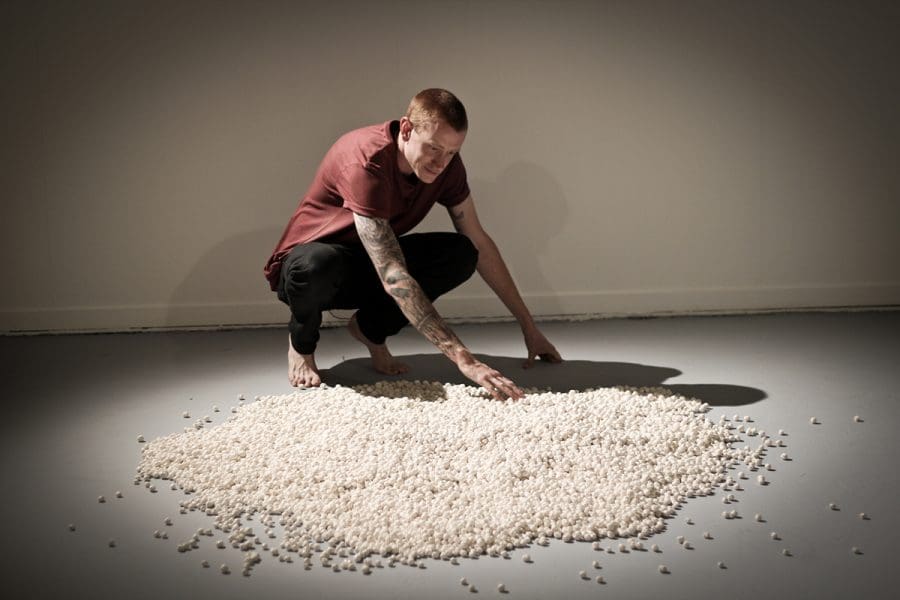
Making Space at the Table
NAP Contemporary’s group show, The Elephant Table, platforms six artists and voices—creating chaos, connection and conversation.




For its first exhibition, Science Gallery Melbourne is filling the Frank Tate Building with blood. Or, more actually, artworks which respond to the red stuff. Blood is both a loaded symbol in art and a contested site for scientific research. As such, it is a fitting theme for the exhibition BLOOD: Attract & Repel at the Melbourne node of an international network of galleries devoted to art and science. The Science Gallery Melbourne will move into purpose-built premises in Carlton in 2020. Toby Fehily spoke to gallery director Rose Hiscock about the exhibition, the inherent creativity behind science and why failure is an important part of any experimentation.
Toby Fehily: How did this exhibition come about?
Rose Hiscock: The Dublin Science Gallery opened in 2008, and in 2014 they held an exhibition about blood which was phenomenally successful. So we chose three artworks from that original exhibition then teamed up with our colleagues in the London gallery and put an open call out to the world for responses around blood. We commissioned 22 new pieces of art for Melbourne. It’s a really great expression of our network in action.
TF: In addition to artists and curators, the curatorial panel included a haematologist, a cardiologist and a virologist. What did the scientists add to the exhibition?
RH: I think they challenged us to stretch and to be a little more edgy in our content. They gave us an environment in which to ask questions. And that’s the wonderful thing about working with scientists. Because they’re dealing with evidence and fact, they enable you to explore different topics that might otherwise be difficult. And they gave us a framework in which to address those difficult topics in a way that we know will be scientifically correct.
TF: The Science Gallery network doesn’t talk about combining art and science but about colliding them. What’s the reasoning behind this specific choice of words?
RH: Our starting point, really, is that science is an inherently creative pursuit. Science is constantly looking for breakthroughs, for an evolution, and it’s often left-field thinking that’s going to enable that to happen.
TF: The creative director Dr Ryan Jeffries said the program’s approach was equal parts exhibition and experiment.
RH: Each of the artworks explores the inherent science behind it in a way that’s really creative and by nature experimental. So Penny Byrne is exploring a new medium and working with a scientist for the first time in #BloodDiamond. The artist has paired up with a malaria researcher to create a beautifully resolved representation of a blood cell with data from malaria research alongside it. And in John O’Shea‘s work Black Market Pudding, he’s pursuing a line of enquiry rather than just a final object. And in Ollie Cotsaftis and Sarah McArthur’s Sentience, which is the work around our response to the smell of blood, we’re working alongside Microsoft, who will be motion-mapping audiences to capture our emotional response to blood. So that’s a pairing of artists alongside a technology provider to develop an experimental response to the artwork.
And look, the other thing about experimentation is failure. This is not a polished show-pony kind of exhibition. It’s rough around the edges. Some of the ideas are fully resolved and incredibly beautiful, and some are in development. We will be asking audiences what they think about some of the installations and propositions, whether they work or provoke questions? That’s also part of our process. We wanted to take the opportunity to do this in an unusual way. The idea is not to create something that’s perfect, it’s create something that’s experimental and inspiring.
TF: Blood elicits strong reactions. What work do you personally find the most confronting?
RH: One work that I think is extraordinary is a work by the German artist Basse Stittgen called Blood objects. He’s using blood that has been sterilised and he’s moulding it into a form that can be held and touched. And so he’s asking a number of questions in that work: one around blood as a waste product from abattoirs, but he’s also looking at blood that has a stigma attached to it; blood with HIV and hepatitis virus in it.
TF: What’s next for Science Gallery Melbourne, before the opening of its purpose-built premises in 2020?
RH: Well, it’s a great question, and I don’t know. And I genuinely don’t know because the way that we develop our topics is through a think-tank process. We have a think-tank called the Leonardo Group which includes artists, scientists, designers, technology specialists, young adults: just big thinkers. And we get them in a room twice a year and we say, “Well, what matters? What topics should we cover next?” And we will be holding our first meeting of that group on the 29th of August. In broad terms though, we’ll do a pop-up every year and then we’ll open the gallery itself in 2020 as part of the University of Melbourne’s innovation precinct on the site of the former Royal Women’s Hospital.
TF: The Science Gallery is part of a network of galleries across the world. What is it about Melbourne that makes the city a good home for the gallery?
RH: Melbourne is the perfect home for Science Gallery. Arts, science, experimentation an audience that is inquiring, up for a challenge and up for conversation: they are all the attributes of Melbourne. We have one of the most extraordinary biomedical precincts, we have an incredibly vibrant arts community, and we have an audience who loves to attend events.
I worked in Sydney for six years, and there really is a difference in the way Melburnians love to attend events, but particularly events that are around knowledge and ideas, as we’ve seen with the success of the Wheeler Centre or those massive big events at the NGV, MPavilion or the Melbourne Theatre Company. It’s a city where people turn up to the events but also engage in the conversations. And that’s what we’re after. We are after the conversations. We are after the moment where sparks fly and someone thinks about something in a new way.
BLOOD: Attract & Repel
Science Gallery Melbourne
2 August 23 September